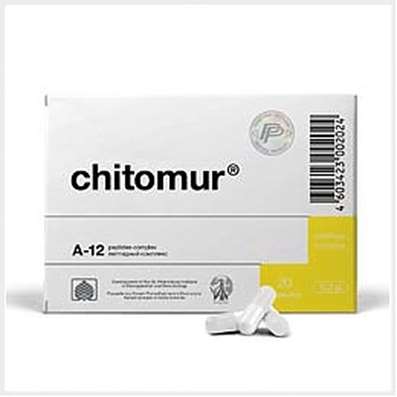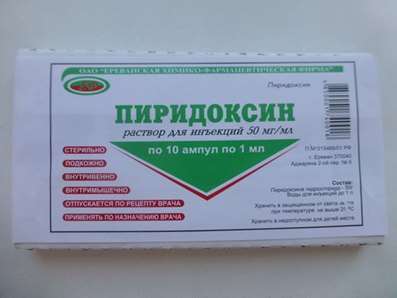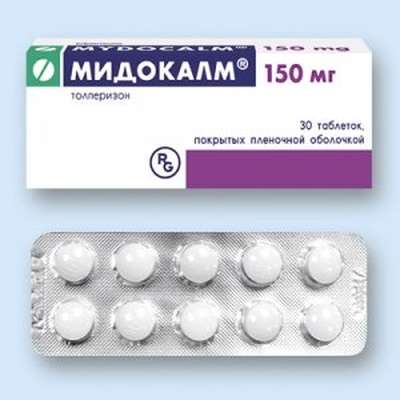Instruction for use: Valocordin-Doxylamine
I want this, give me price
Dosage form: Drops for ingestion
Active substance: Doxylaminum
Pharmacological groups:
Sleeping and sedative drugs other [H1-antihistamines]
Sleeping pills and sedatives other [Sleeping pills]
The nosological classification (ICD-10)
G47.0 Disorders of falling asleep and maintaining sleep [insomnia]: Insomnia; Insomnia, especially difficulty falling asleep; desynchronosis; Prolonged sleep disturbance; Difficulty falling asleep; Short-term and transient insomnia; Short-term and chronic sleep disorders; Short or shallow sleep; Violation of sleep; Disturbed sleep, especially in the phase of falling asleep; Infringements sleep; sleep disturbances; Neurotic sleep disturbance; Shallow superficial sleep; shallow sleep; Poor quality of sleep; Night awakening; sleep Pathology; Postsomnic violation; transient insomnia; Trouble falling asleep; Early awakening; Early morning awakening; Early awakening; sleep disorder; somnipathy; persistent insomnia; difficult to fall asleep; difficulty falling asleep; Difficulty falling asleep in children; persistent insomnia; Worsening sleep; Chronic insomnia; Frequent night and / or early morning awakening; Frequent nocturnal awakening and a sense of the depth of the non-sleep; Night waking
Composition
Drops for ingestion 1 ml (22 drops)
active substance: Doxylamine succinate 25 mg
Auxiliary substances: ethanol 96% - 450 mg; Mint oil - 1.4 mg; Purified water - 449.7 mg
Description of dosage form
Drops: clear, colorless liquid with mint smell.
Pharmachologic effect
Mode of action - antihistamine, hypnotic, sedative.
Pharmacodynamics
The blocker of H1-histamine receptors from the group of ethanolamines. The drug has hypnotic, sedative, antihistamine and m-cholinoblocking action. Reduces the time of falling asleep, increases the duration and quality of sleep, without changing the phase of sleep.
The action begins within 30 minutes after taking doxylamine, its duration is 3-6 hours.
Pharmacokinetics
Doxylamine is rapidly and almost completely absorbed after oral administration. Cmax in the serum is detectable 2-2.4 hours after admission in a dose of 25 mg and is 99 ng / ml.
Doxylamine is metabolized predominantly in the liver. The main metabolites are N-desmethyl doxylamine, N, N -dimesmethyl doxylamine and their N-acetyl-conjugates. It penetrates well through the histohematological barriers, including the BBB. T1 / 2 ranges from 10.1 to 12 hours. The bulk of the dose (about 60%) is excreted unchanged in the urine, in part - through the intestine.
Indication for the Valocordin-Doxylamine
Symptomatic treatment of intermittent sleep disorders (difficulty falling asleep and nocturnal awakenings) in patients over 18 years of age.
Not all sleep disorders require drug therapy. Often, sleep disorders are caused by a deterioration in health or mental disorders and can be eliminated by other measures or by direct treatment of the underlying disease. Therefore, do not treat chronic sleep disorders (difficulty falling asleep and nocturnal awakenings) with Valocordin®-Doxylamine for a long time without consulting your doctor; In such cases it is recommended to consult a doctor.
Contraindications
Increased sensitivity to doxylamine, any component of the drug, as well as other antihistamines;
Acute asthmatic attack;
Angle-closure glaucoma;
Congenital syndrome of prolonged QT interval;
Pheochromocytoma;
Hyperplasia of the prostate with impaired urine outflow;
Acute poisoning with alcohol and hypnotics, narcotic analgesics, neuroleptics, tranquilizers, antidepressants, lithium preparations;
epilepsy;
Simultaneous administration of MAO inhibitors;
Patients with bronchial asthma or other respiratory diseases that are characterized by increased sensitivity of the airways (do not use Valocordin-Doxylamine, since it contains mint oil, the inhalation of which can cause bronchospasm);
The period of breastfeeding;
Age to 18 years.
With caution: pregnancy; liver failure; alcoholism; heart failure; arterial hypertension; Bronchospasm in the anamnesis; Chronic dyspnea; Gastroesophageal reflux; Pyloric stenosis, cardiac achalasia; Age over 65 years (the possibility of developing dizziness, the risk of losing balance and falling during night awakenings, and also due to the possible increase in T1 / 2 doxylamine).
Valocordin-Doxylamine should be used with extreme caution in patients with localized cerebral cortex damage and seizures in the anamnesis, since even small doses of the drug can trigger severe epileptic seizures. It is recommended to conduct EEG. Anticonvulsant therapy should not be interrupted during the use of Valocordin®-Doxylamine.
Application in pregnancy and breastfeeding
Experiments on animals have not revealed any data on the presence of teratogenic properties in doxylamine, as well as a decrease in fertility against its background. Epidemiological studies of drugs containing doxylamine succinate did not show the development of teratogenic effects in humans. Nevertheless, Valocordin®-Doxylamine can be used during pregnancy only when the intended benefit to the mother exceeds the possible risk to the fetus.
Breast-feeding during treatment with Valocordin®-Doxylamine should be discontinued because the active substance penetrates into breast milk.
Side effects
The frequency of potential adverse reactions is classified as follows: very often (≥1 / 10); Often (≥1 / 100 <1/10); Infrequently (≥1 / 1000 to <1/100); Rarely (≥1 / 10000 to <1/1000); Very rarely (<1/10000) and the frequency is unknown (cannot be estimated from the available data).
From the side of blood and lymphatic system: in exceptional cases, when treating blockers of H1-histamine receptors, the development of leukopenia, thrombocytopenia, hemolytic anemia was reported; Very rarely - reported cases of aplastic anemia and agranulocytosis.
On the part of the endocrine system: in patients with pheochromocytoma, the use of H1-histamine receptor blockers can cause an increase in the release of catecholamines.
Mental disorders: to undesirable reactions that depend on individual susceptibility and accepted dose include decreased speed of psychomotor reactions, decreased concentration of attention, depression; In addition, paradoxical reactions may arise-anxiety, agitation, anxiety, insomnia, nightmares, confusion, hallucinations, tremors. After prolonged daily use, abrupt discontinuation of therapy can lead to ricochet insomnia.
Drug dependence. Like other sleeping pills, doxylamine can cause physical and mental dependence. The risk of dependence increases with an increase in the dose and duration of treatment, as well as in patients with alcohol and drug dependence (including in the anamnesis).
Reflective insomnia. Even after short courses of doxylamine intake, its cancellation can lead to a recurrence of insomnia. Therefore, stop treatment should be, gradually reducing the dose.
Anterograde amnesia. Even in therapeutic doses, doxylamine can cause anterograde amnesia, especially within the first hour after its administration. The risk increases with increasing dose, but can be reduced due to continuous sleep of sufficient duration (7-8 hours).
From the nervous system: dizziness, drowsiness, headache; Rarely - cramps are possible.
From the side of the organ of vision: disturbances in accommodation, an increase in IOP.
From the side of the organ of hearing and balance: noise in the ears.
From the CVS: tachycardia, arrhythmia, a decrease or increase in blood pressure, decompensated heart failure. In several cases, changes were found on the ECG.
On the part of the respiratory, thorax and mediastinal organs: thickening of the bronchial secretion, bronchial obstruction, bronchospasm, which can lead to impaired lung function.
From the gastrointestinal tract: autonomic undesirable reactions, such as dry mouth and constipation; May experience nausea, vomiting, diarrhea, decreased or increased appetite, epigastric pain; Very rarely - life-threatening paralytic intestinal obstruction.
From the side of the liver and bile ducts: against the background of antihistamine therapy, violations of liver function (cholestatic jaundice) have been reported.
From the skin and subcutaneous tissue: skin allergic reactions, photosensitization, violation of thermoregulation.
From the musculoskeletal system and connective tissue: muscle weakness.
From the side of the kidneys and urinary tract: violation of urination.
General disorders and disorders at the injection site: nasal congestion, fatigue, lethargy.
Careful individual selection of a daily dose can reduce the frequency and severity of adverse reactions. The risk of unwanted reactions is higher in elderly patients, which can increase their risk of falls.
Development of habituation: regular application can lead to a decrease in effectiveness (addiction).
Interaction
With the simultaneous use of the drug Valocordin-Doxylamine with antidepressants, barbiturates, benzodiazepines, anxiolytics, sedatives, narcotic analgesics, codeine-containing analgesics and antitussives, neuroleptics, other blockers of H1-histamine receptors, central antihypertensive drugs (eg clonidine and alpha-methyldopa), Thalidomide, baclofen, and pisotifenum, the inhibitory effect on the central nervous system increases.
The use of doxylamine leads to a significant increase in the activity of CYP2 <span class = "sokr" title = "volts"> B, as well as moderate induction of CYP3A and CYP2A. It is impossible to exclude the possibility of interaction with drugs metabolized with the participation of these enzymes, for example antiarrhythmics, protease inhibitors, neuroleptics, beta-blockers, immunosuppressants and antiepileptic drugs.
Since ethanol enhances the sedative effect of most H1-histamine receptor blockers, simultaneous use of Valocordin®-Doxylamine and drugs containing ethanol and the consumption of alcoholic beverages should be avoided.
When used simultaneously with drugs that have m-cholinoblocking activity (atropine and atropine-containing antispasmodics, tricyclic antidepressants, MAO inhibitors, antiparkinsonics, disopyramide, phenothiazine antipsychotics), the anticholinergic effect of doxylamine succinate may be unpredictably increased and prolonged, and the risk of such unwanted Reactions like urine retention, constipation, paralytic intestinal obstruction, dry mouth, increased IOP. In addition, the combined use of doxylamine with MAO inhibitors can cause the development of arterial hypotension, CNS depression and respiratory function.
Reception of antihistamines can mask the initial signs of damage to the inner ear (ringing in the ears, dizziness, confusion) caused by the simultaneous administration of ototoxic drugs (such as aminoglycosides, salicylates, diuretics).
During the treatment of doxylamine with succinate, the results of skin tests can be false-negative.
Patients who take doxylamine succinate cannot eliminate arterial hypotension with epinephrine (adrenaline) (possibly a paradoxical increase in the severity of hypotension). In case of shock, norepinephrine (norepinephrine) should be used.
With simultaneous use with photosensitizing drugs, an additive photosensitizing effect can be noted.
Dosing and Administration
Inside, with 100-150 ml of liquid (water) for 30 minutes - 1 hour before the desired time of onset of sleep.
If the doctor is not prescribed otherwise, a single dose of Valocordin®-Doxylamine for patients over 18 years of age is 22 drops (corresponding to 25 mg of doxylamine succinate). With insufficient effectiveness of therapy, the dose can be increased to a maximum of 44 drops (50 mg). Do not exceed the maximum daily dose.
After taking Valocordin®-Doxylamine it is necessary to ensure a sufficient duration of sleep, which will avoid the disturbance of psychomotor reactions in the morning.
In case of acute sleep disturbances, it should be limited to a single use. To check the need for continued treatment with regular sleep disorders, it is recommended that, no later than 14 days after the start of the daily application, a gradual dose reduction be undertaken.
Usually the duration of treatment is 2-5 days, the maximum duration of treatment with doxylamine is 14 days.
Special patient groups
Patients with renal and / or hepatic insufficiency, as well as patients older than 65 years may be more susceptible to doxylamine, and therefore it is recommended to reduce its dose.
Overdose
Symptoms: daytime sleepiness, dilated pupils, paresis of accommodation, dry mouth, reddening of the skin of the face and neck, fever, sinus tachycardia, frustration, hallucinations, decreased mood, increased anxiety, impaired coordination of movements, tremor, involuntary movements, convulsive syndrome , A coma.
Involuntary movements sometimes are harbingers of convulsions, which may indicate a severe degree of poisoning. Even in the absence of convulsions, poisoning with doxylamine can cause the development of rhabdomyolysis, which is often accompanied by the development of severe renal failure. In such cases, standard therapy with a constant control of the activity of CK is shown.
There is a report of the case when as a result of the patient receiving 500 mg of doxylamine (due to the insomnia stand) acute pancreatitis and acute renal failure developed.
If symptoms of poisoning appear, consult a doctor immediately.
Treatment: symptomatic (including m-holinomimetiki and anticonvulsant drugs) and maintenance therapy (including mechanical ventilation). As a first aid is shown the reception of activated charcoal (adults - 50 g, children with an accidental overdose - 1 g / kg). When ingesting a large amount of the drug - the purpose of washing the stomach or induction of vomiting. Analeptics are contraindicated, because the risk of a convulsive syndrome increases because of a possible reduction in the convulsive threshold caused by taking Valocordin®-Doxylamine. With arterial hypotension, no alpha and beta adrenostimulants are prescribed, incl. Epinephrine (adrenaline), because of the possibility of a paradoxical increase in the severity of hypotension. It is advisable to appoint norepinephrine (norepinephrine). It is necessary to avoid the use of drugs with beta-adrenostimulating action, as they can enhance vasodilation. When severe poisoning (loss of consciousness, cardiac arrhythmia) or the emergence of anticholinergic syndrome (with ECG monitoring), you can apply the antidote - physostigmine salicylate. With repeated epileptic attacks, anticonvulsant drugs are prescribed. Because of the increased risk of developing respiratory depression, their appointment is only possible in cases where it is possible to carry out mechanical ventilation. The efficacy of hemodialysis, haemofiltration and peritoneal dialysis with doxylamine overdose has not been studied, but these methods are unlikely to be effective due to the large Vd of the drug. The effectiveness of forced diuresis is not established.
Special instructions
Valocordin®-Doxylamine contains 55% by volume of ethanol (up to 900 mg per dose (22 drops), corresponding to 21.87 ml of beer or 9.11 ml of wine), which can be dangerous for people with liver disease, alcoholism, epilepsy, and Also for pregnant women.
After taking the drug should provide sufficient time for sleep (prevention of a delayed psychomotor reaction after awakening).
Like all sleeping pills and sedatives, doxylamine succinate can aggravate the course of nighttime sleep apnea - increase the number and duration of sudden breath stops in a dream.
During treatment with antihistamines, regular monitoring of heart function is necessary, because There are reports of changes in the ECG, in particular, changes in the repolarization phase. This is especially important for elderly patients and patients with heart failure.
Particular care should be exercised in the treatment of patients with hypertension, since antihistamines can increase blood pressure.
Influence on the ability to drive vehicles and work with machinery. This drug (even with its proper use) can have a negative effect on the ability to actively participate in traffic or control other mechanisms. Especially with the simultaneous use of the drug and alcohol. Therefore, you should avoid driving the car, service other mechanisms and any activity in an environment of high risk, at least during the first phase of treatment. The attending physician makes a decision in each case, taking into account the individual reaction speed, the prescribed dosage.
Release form
Drops for oral administration, 25 mg / ml. In the bottles-droppers of brown glass, 20 or 50 ml. Each bottle is a dropper in a cardboard box.
Manufacturer
"Crevel Moiselbach GmbH." Crevelstrasse, 2, D-53783, Aitorf, Germany.
Conditions of leave from pharmacies
On prescription.
Storage conditions of the drug Valocordin-Doxylamine
At a temperature not higher than 25 ° C.
Keep out of the reach of children.
Shelf life of the drug Valocordin-Doxylamine
5 years. After opening - 6 months.
Do not use after the expiry date printed on the package.

 Cart
Cart





